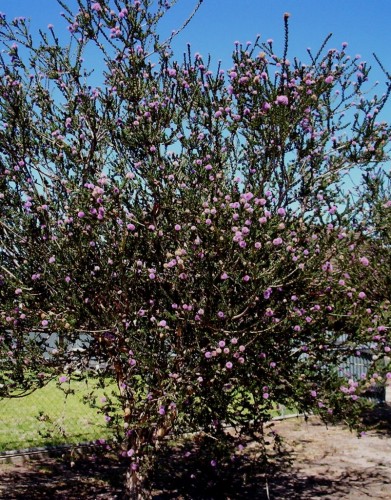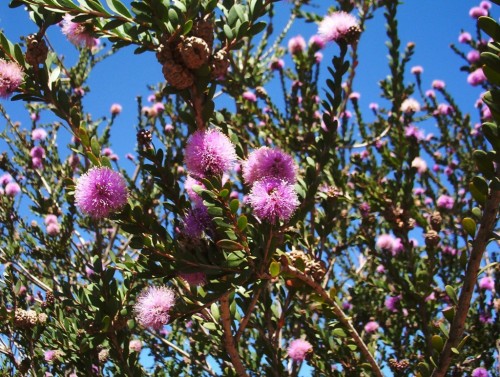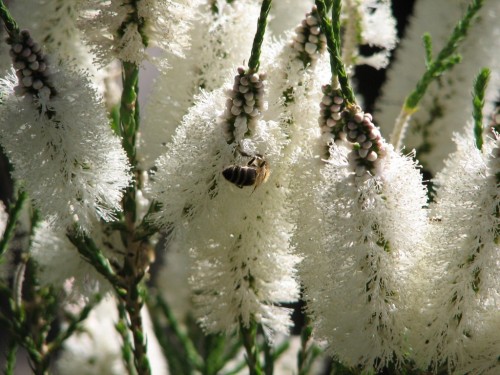Melaleuca nesophila (Showy Honeymyrtle)
This very hardy plant reads almost like the perfect plant to grow. Apart from not liking severe frost, it will grow practically anywhere. The information says that it will tolerate salt spray, acid to very alkaline soil and lime. Many Melaleucas will grow in quite damp soils and this is one of them, as well as growing in very dry conditions. It also takes hard cutting and trimming which makes it ideal for wind breaks and hedges. Apart from that it is also a very pretty plant.
Melaleuca nesophila
This plant is spectacular when in flower and a very attractive plant all year round. It is very hardy in most soils and aspects. It is frost hardy to about -7C. There must have been a severe frost in my daughter’s neighbourhood last winter as all the Melaleuca nesophila bushes in the neighbours’ yards were burnt. It is a fast growing screen or feature plant.
Melaleuca hueglii
I do like this species. Ivan Holiday has written excellent books on the identification of these and the books are readily available.
Melaleuca hueglii is one that does very well here in dry and alkaline soils. This is quite a large shrub but accepts quite severe cutting to bare wood. There is a form which has pink buds that open to white flowers. It is best to trim these after flowering.
Australian Native Plants and Frost
I arrived home today from a few weeks enforced convalescence at daughter’s home in the mid north of the state. On many of my gentle walks with her dog I was able to observe the frost damaged plants in the district.
My daughter has a large Melaleuca nesophila in her front yard on the high side of a slope. It flowers wonderfully each year. No sign of burning anywhere on the very large shrubby tree. On the side fence the neighbour has one as does the neighbour on the back fence. Both large shrubs have been severely frost burnt. Yet, in the same yard over the back fence, the lemon tree looks unscathed. I have come to the conclusion that I don’t understand the vagaries of frost. (Just checked my references and it appears that they are damaged by heavy frost. I guess I assumed that because it is such a hardy plant that it would be frost tolerant.)
I thought one could not kill old fashioned marguerite daisies, or geraniums, but both have been severely burnt in daughter’s yard. Both plants have sap in the stems we discovered when tidying some plants so we are hopeful that there will be regrowth. Left the geranium untouched until the frosts have finished as some new growth appeared at the base of the plant and the burnt bits appear to be giving some protection.
I hate to think what the situation is further north where the temperatures dropped even lower.


